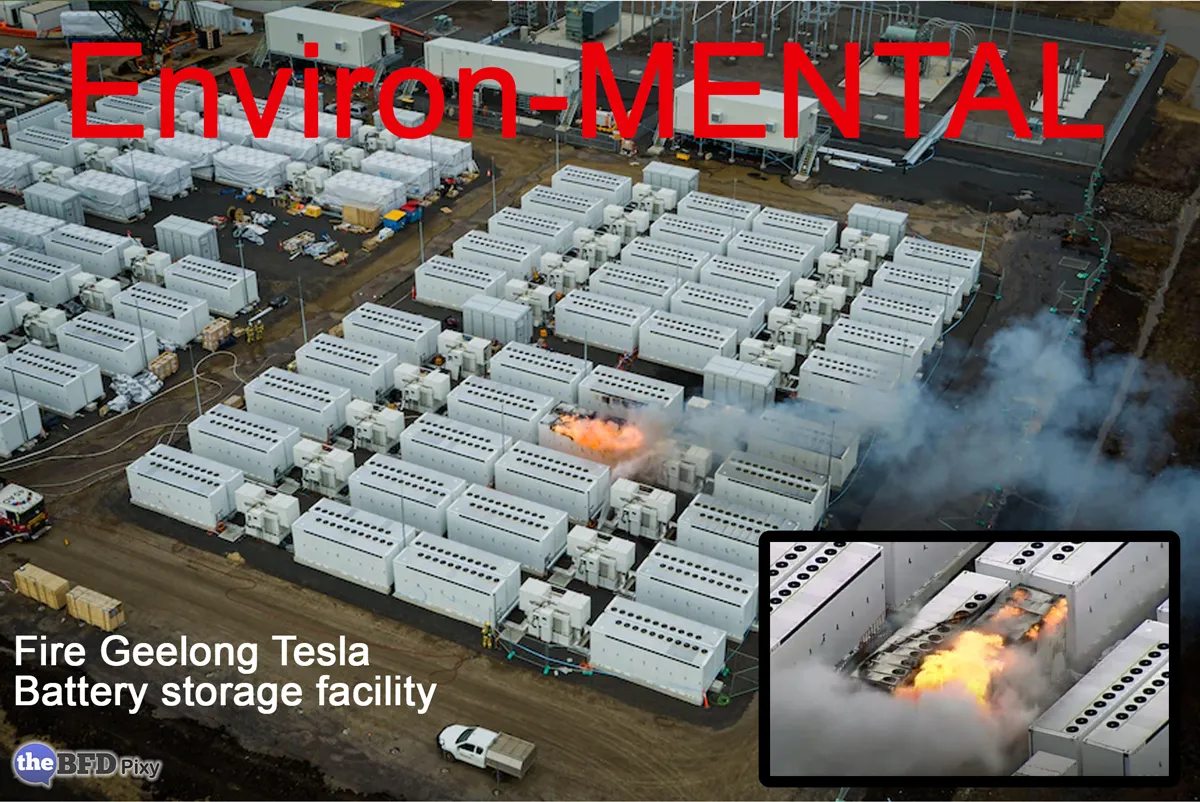Anyone who thinks we’ll keep on using fossil fuels forever is a fool. Anyone who says we’re on the cusp of abandoning them forever is either a bigger fool — or a liar.
Fossil fuels by their very nature cannot last forever. But they’re not about to run out any time soon: known reserves of oil and coal will keep us supplied for centuries, yet. As the saying goes: the Stone Age did not end for want of stones; the fossil fuel age will end long before we run out of fossil fuels.
But we’re not there yet. Anyone who tries to tell you we are is a fool or a charlatan. Current renewable technologies are simply unable to meet the demands of a modern, industrialised society, and are staggeringly expensive.
Storage is another issue: at present, “big batteries” are the supposed answer. But they’re just as costly as solar and wind in the first place — and incredibly dangerous.
Lithium-ion battery explosions like the one that critically injured a person in Wellington on Saturday are unstoppable, Fire and Emergency New Zealand (FENZ) warns.
The chemical reaction that happens when such batteries fail causes fires that cannot be put out, meaning all the public can do is get away from the blaze and call 111 for help.
Firefighters rushed to the Century City apartments on Saturday evening when a charging e-scooter exploded, leaving one person with life-threatening injuries. They remain in a critical condition in Hutt Hospital’s intensive care unit days later.
NZ Herald
That’s just a bitty lithium battery in an e-scooter. Imagine that scaled up to something like South Australia’s much-vaunted “big battery”. The more such lithium-ion battery plants are built, the more frequent such fires will become.
Then there’s the catastrophic environmental and social cost of manufacturing them. Whether it’s exploiting child slave-labour in Africa, or the vast lakes of polluted water in China, lithium-ion based batteries are a very bad deal.
Still, some form of storage will be certainly be a vital component of the future energy mix, whatever it may be. Strangely enough, a possibly promising new technology in fact relies at least in part on some very ancient technology.
Unfortunately, the vast majority of rechargeable batteries currently rely on rare earth metals like lithium, the mining of which is fraught with environmental and ethical issues. According to researchers, however, a promising alternative can be found simply by combining two of civilization’s oldest and most commonplace materials: cement, and the charcoal-like mixture known as carbon black.
As anyone who’s ever dabbled in electronics and copped an unexpected shock will know, capacitors are somewhat like batteries in storing up a charge. So-called “supercapacitors” may fill the same role.
As detailed in a new study published on July 31 in the Proceedings of the National Academy of Sciences, engineers working together from MIT and the Wyss Institute recently discovered that properly mixing the two ingredients in electrolyte-infused water creates a powerful, low-cost supercapacitor capable of storing electricity for later usage. With some further fine-tuning and experimentation, the team believes their enriched cement material could one day compose portions of buildings’ foundations, or even create wireless charging.
Much like batteries, supercapacitors store and direct large reserves of electrical power. To do this, designers soak two conductive plates in an electrolyte solution before inserting a membrane between them. Once charged, the barrier then prevents ions from traveling between the positive and negative plates, thus storing the potential power for later usage.
In the case of researchers’ new cement-based material, however, its relatively high internal surface area is key to its supercapacitor potential. After combining highly conductive carbon black, cement powder, and water, researchers wait for their resultant mixture to cure. During this time, the water naturally creates tiny openings which are subsequently filed by the carbon to ostensibly create an internal, fractal-like network of wiring. Position two plates of this material atop one another and separate them by an insulating layer, and you have a novel supercapacitor at your disposal.
Cement, of course, dates as far back as 6,500 BC. Carbon black ink was first used around 3,000 BC, and was used by everyone from the ancient Chinese to Egyptian papyri. Even the Dead Sea Scrolls were penned in carbon black ink.
“You have these at least two-millennia-old materials that, when you combine them in a specific manner, you come up with a conductive nanocomposite, and that’s when things get really interesting,” [researcerh Admir Masic] said in a statement.
The team envisions projects such as stretches of roadways imbued with the concrete superconductor material wired to nearby solar panel arrays. Similar to experimental projects already underway in Europe, the streets themselves could then be harnessed to wireless charge vehicles as they ride atop the surface.
Popular Science
Such electric dreams are well off in the future — if ever — at present. So far, the researchers have created a trio of 1 volt prototypes, around 1cm in diameter and 1mm thick.
It’s a start.









